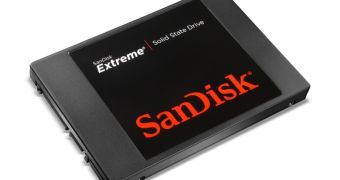We know there were attempts to enable TRIM on RAID solid-state drive setups in the past, but Windows 8 might finally set the foundation for universal support.
SSDs have a limited number of write cycles, this being their greatest weakness. Over time, constant use leads to a drop in performance.
TRIM is a special technology, a software command of sorts, which deletes the data sectors used by solid-state drives for erased data, thus restoring lost cycles to usability.
Even TRIM is not perfect though. While Windows-loaded systems handle a SSD or two just fine, it does not function on more advanced drive combinations.
We mean RAID setups, when part of the capacity is sacrificed in order to have a PC or NAS view two or more drives as a single device. This is why NAS devices use hard drives almost exclusively even now.
It is now revealed that Microsoft's Windows 8 operating system includes a certain feature that enables TRIM on RAID 0 configurations.
There are some harsh conditions though. First off, the hardware needs to be based on an Intel 7-Series chipset (Z77 express, H77, etc). Secondly, the RAID BIOS (Option ROM) needs to be version 11.5 or higher. Thirdly, the setup also relies on Intel Rapid Storage Technology (RTS) 11.5 or better.
Customer seeking to build a computer with support for all this will have to pay very close mind to what specs manufacturers of motherboards decide upon. It falls to them to choose the BIOS'es and make updates to them after all.
Of course, with all these constraints, SSD RAID 0 continues to be a bad idea on network-attached storage or multi-drive USB/eSATA enclosures. Nevertheless, we have no doubt that it is only a matter of time before they, too, gain these benefits, and, eventually, TRIM support on all RAID types.

 14 DAY TRIAL //
14 DAY TRIAL //